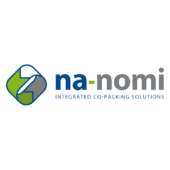What Are the Advantages of Using Robotic Process Automation Tools
 In recent years, the adoption of robotic process automation tools has surged across various industries, driven by their ability to enhance operational efficiency and reduce costs. According to a report by Gartner, RPA technology is expected to achieve a compound annual growth rate of 41% through 2027, indicating its growing importance in the enterprise landscape. These tools not only automate repetitive tasks but also improve accuracy and compliance, mitigating human error that can lead to substantial financial repercussions. A study by McKinsey highlights that organizations implementing RPA can expect to reduce operational costs by up to 30%, significantly boosting productivity levels.
In recent years, the adoption of robotic process automation tools has surged across various industries, driven by their ability to enhance operational efficiency and reduce costs. According to a report by Gartner, RPA technology is expected to achieve a compound annual growth rate of 41% through 2027, indicating its growing importance in the enterprise landscape. These tools not only automate repetitive tasks but also improve accuracy and compliance, mitigating human error that can lead to substantial financial repercussions. A study by McKinsey highlights that organizations implementing RPA can expect to reduce operational costs by up to 30%, significantly boosting productivity levels.
As businesses increasingly seek to streamline processes and focus on strategic initiatives, the advantages of utilizing robotic process automation tools become clear, positioning them as essential components in achieving digital transformation.
Advantages of Robotic Process Automation: Enhancing Efficiency and Accuracy
Robotic Process Automation (RPA) tools offer significant advantages that enhance efficiency and accuracy across various industries. According to recent market reports, the RPA market is projected to reach approximately $4.29 billion by 2023, with a remarkable compound annual growth rate (CAGR) of 21.46% expected from 2024 to 2031. This growth reflects the increasing recognition of RPA’s potential to streamline operations, reduce human error, and free up employees to focus on higher-value tasks.
Furthermore, the integration of artificial intelligence (AI) into RPA systems is set to revolutionize the landscape of automation. As companies seek to increase operational resilience post-pandemic, AI-powered RPA solutions are becoming essential in enhancing workflow efficiency. These innovations not only automate repetitive tasks but also optimize decision-making processes by analyzing vast amounts of data and providing actionable insights. As RPA tools continue to evolve, they empower organizations to respond swiftly to challenges, mitigating inefficiencies and improving overall performance.
Advantages of Robotic Process Automation
Cost Reduction Through Robotic Process Automation: Industry Statistics and Insights
Robotic Process Automation (RPA) is revolutionizing various industries, particularly in achieving significant cost reductions. With the global RPA market expanding, organizations are increasingly relying on software and services to automate repetitive tasks. This shift not only enhances efficiency but also streamlines workflows, leading to substantial savings. Companies that have embraced RPA report reducing operational costs considerably, often doubling the savings compared to those who lag behind in automation investment.
In sectors like healthcare, the adoption of RPA is making services more affordable and accessible. By utilizing scalable automation technologies, healthcare providers can focus more on patient care rather than administrative burdens. Industry insights indicate that automation technologies, including RPA, machine learning, and robotics, are transforming workplaces, allowing businesses to reallocate resources, improve service delivery, and enhance overall productivity. As firms continue to recognize the financial benefits of RPA, its implementation is likely to accelerate, paving the way for future innovations and efficiencies in various fields.
What Are the Advantages of Using Robotic Process Automation Tools - Cost Reduction Through Robotic Process Automation: Industry Statistics and Insights
| Industry | Average Cost Reduction (%) | Time Saved per Process (Hours) | Return on Investment (ROI) (%) | Adoption Rate (%) |
|---|---|---|---|---|
| Finance | 30 | 20 | 200 | 65 |
| Healthcare | 25 | 15 | 150 | 60 |
| Retail | 20 | 10 | 120 | 55 |
| Manufacturing | 35 | 25 | 250 | 70 |
| Telecommunications | 28 | 18 | 180 | 67 |
Improving Workforce Productivity with RPA: Data-Driven Evidence
Robotic Process Automation (RPA) tools have emerged as game-changers in enhancing workforce productivity. According to a report from McKinsey & Company, organizations that implement RPA can boost their productivity by up to 30%. This productivity surge stems from the automation of repetitive, rule-based tasks, allowing employees to focus on more strategic, value-added activities. As workers engage in higher-level tasks, companies report improvements in employee satisfaction and retention, as the mundane work is significantly reduced.
In a study published by Deloitte, 53% of leaders stated that RPA initiatives have enhanced efficiency in their businesses, enabling faster turnaround times for processes that previously required substantial time and human resources. The report noted that RPA implementation not only slashes operational costs by about 20-30%, but it also leads to fewer errors, enhancing the overall quality of work output. As companies continue to harness the data-driven evidence of RPA's advantages, the trend of automation is likely to gain momentum, fundamentally reshaping how organizations operate and compete in their respective industries.

Transformative Impact of RPA on Operational Costs and Human Resources
Robotic Process Automation (RPA) is revolutionizing the landscape of operational efficiency across various industries. The transformative impact of RPA tools on operational costs is significant; organizations adopting these technologies often experience a marked reduction in expenses associated with manual processes. By automating repetitive tasks, businesses not only save on labor costs but also enhance accuracy and speed, leading to overall improved productivity. With the global RPA market valued at $4.29 billion in 2023 and projected to reach $19.83 billion by 2031, the compounded annual growth rate indicates a robust trend towards automation as organizations realize its cost-saving potential.

In addition to financial advantages, RPA is also changing the way human resources are managed. Emerging technologies within talent management, such as machine learning, support enhanced candidate matching, streamlining hiring processes and aligning talent more effectively with organizational needs. As RPA tools continue to evolve, they will further influence workforce dynamics by allowing HR professionals to focus on strategic initiatives rather than administrative tasks. This shift not only empowers organizations to optimize their human capital but also fosters a more agile workforce capable of adapting to changing market demands.
RPA Adoption Trends and Success Rates: Key Metrics from Various Industries
The adoption of Robotic Process Automation (RPA) has seen significant growth across various industries, with a reported increase in deployment rates of around 60% over the past year alone. According to a recent industry analysis, 87% of organizations that have implemented RPA report an improvement in operational efficiency, showcasing its effectiveness in streamlining processes. The financial services sector leads RPA adoption, with 70% of firms utilizing these tools to automate repetitive tasks, resulting in a 30% reduction in processing time.
Tips: To maximize the success of RPA initiatives, organizations should start by identifying the right processes to automate—those that are high-volume, repetitive, and rule-based. Continuous monitoring and adapting RPA solutions based on feedback can significantly enhance performance outcomes.
In manufacturing and supply chain management, RPA adoption has contributed to a 40% increase in productivity metrics. A study found that 58% of companies report enhanced accuracy in operations post-RPA implementation, demonstrating its capacity to minimize human error. As RPA technology evolves, its integration with AI and machine learning is set to propel industries into a new era of automation, driving not just efficiency but also innovation.
Tips: It's crucial to provide adequate training for staff involved in RPA deployment. Empowering your team with the right skills ensures smoother transitions and better integration of automation technologies.
Smart Robotics brand movie
Watch video




